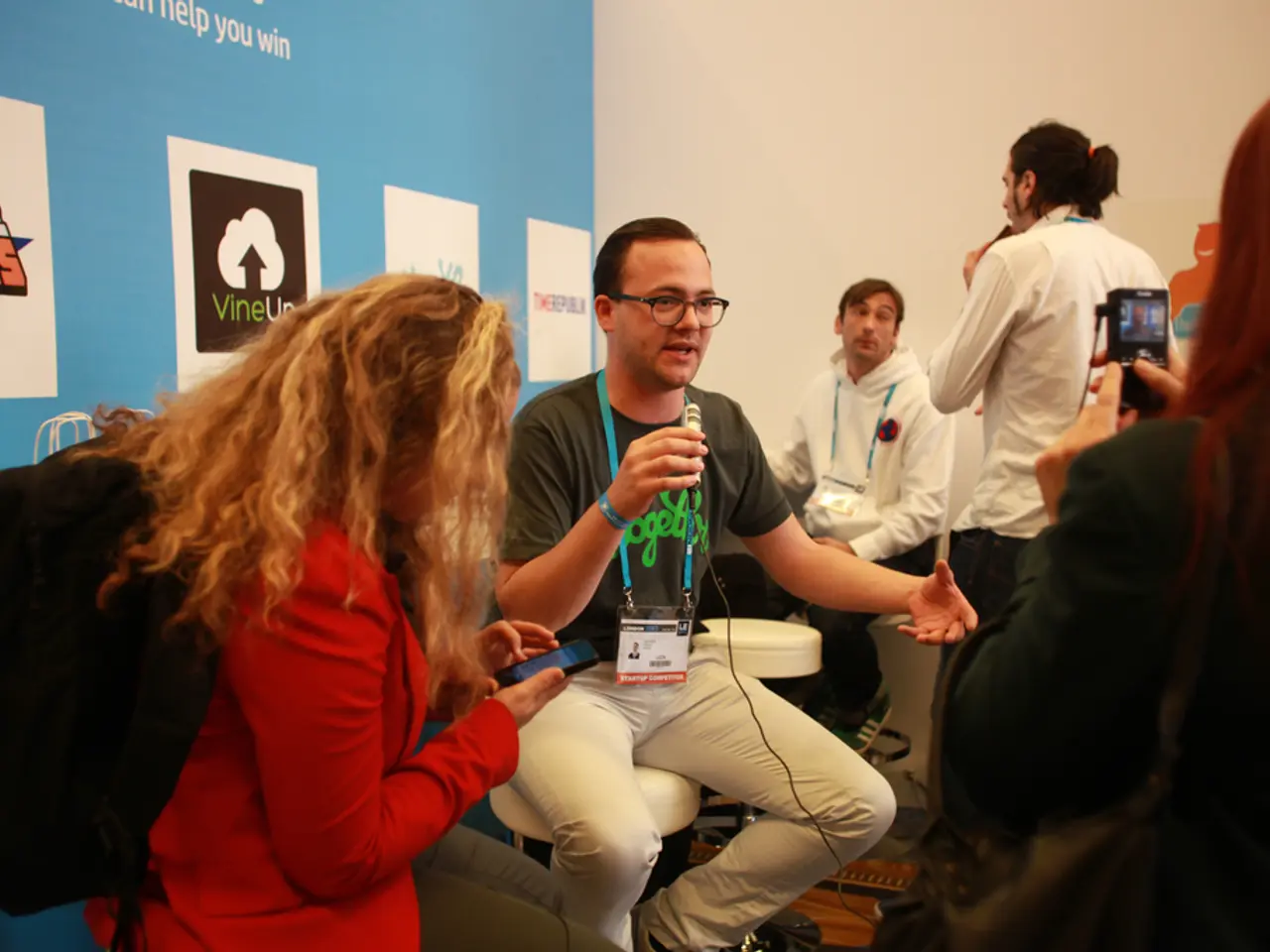AI Voiceover for Content: A Step-by-Step Procedure
In a groundbreaking development, Artificial Intelligence (AI) is transforming the dubbing industry, offering a faster, more cost-effective, and scalable solution for localization businesses.
AI technology can generate high-quality dubbed tracks in a matter of hours, sometimes minutes. This speed and efficiency are achieved through speech synthesis and voice cloning, allowing for multilingual voiceovers without the need for human voice actors, studios, or extensive manual coordination [1][2][3].
Streamlining the Dubbing Process
AI dubbing offers several advantages that make it an ideal choice for studios. One of the most significant benefits is its ability to speed up localization. Simultaneous dubbing in dozens of languages is now possible, reducing turnaround times from weeks to much shorter periods [3][2].
Another key advantage is the significant cost reduction. AI dubbing eliminates expenses related to hiring multiple voice actors, booking studios, and extensive audio production, which traditionally cost hundreds of euros per minute per language [2][3].
Moreover, AI dubbing scales easily to handle more languages and larger volumes of content without fixed overhead. It doesn't rely on scarce human talent or studio availability [1][3].
Maintaining Consistency and Quality
AI dubbing also ensures consistent voice quality and persona across languages and content series. This consistency is more difficult to achieve with human actors [3].
Integrating into Existing Workflows
AI dubbing integrates simply into existing workflows using APIs or bulk processing, enabling agencies to offer end-to-end dubbing services quickly and flexibly [1].
The Hybrid Model
A hybrid model that combines AI and human talent is being implemented for AI dubbing. Voice directors and actors are responsible for polishing the track, correcting timing, and adjusting emotional delivery [6].
The Future of Dubbing
AI dubbing is the future of the dubbing industry, with studios adopting it to stay competitive in the market [7]. It is the only feasible way to meet the current demand for localized content at scale [8].
A Centralized Marketplace
A platform like [the mentioned website] can help find reliable AI technology partners for localization businesses, streamlining the process and providing market intelligence [4]. This platform offers a centralized marketplace to discover, vet, and connect with leading AI dubbing providers from around the world [5].
Joining [the mentioned website]'s Business Network grants access to a global network of vetted vendors and increases the chances of winning more projects [9]. The platform also offers industry briefings, providing insights on Film & TV adaptation trends, production financing outlook, global TV+Film productions review, micro-dramas & mobile-first storytelling, and more [10].
As AI dubbing continues to evolve, it is becoming increasingly clear that it will play a crucial role in meeting the global demand for localized content faster and more affordably than traditional methods [8]. AI dubbing is a huge leap forward compared to clunky, robotic text-to-speech from a decade ago [11].
However, with the rise of AI dubbing, a new Quality Control checklist should be created for AI-dubbed projects, focusing on lip-sync accuracy, emotional consistency, and pronunciation [12]. Some platforms can even clone the original actor's voice for use in other languages, maintaining a consistent vocal identity [6].
In conclusion, AI dubbing is revolutionizing the dubbing industry, offering a faster, more cost-effective, and scalable solution for localization businesses. As the technology continues to evolve, it is set to play an increasingly important role in the entertainment industry.
AI technology, by speeding up localization processes, enables simultaneous dubbing in multiple languages, drastically reducing turnaround times [3][2]. The use of AI dubbing also results in significant cost savings, as it eliminates expenses related to hiring voice actors, booking studios, and extensive audio production [2][3].




